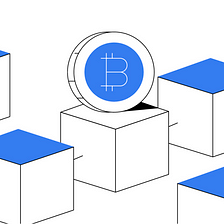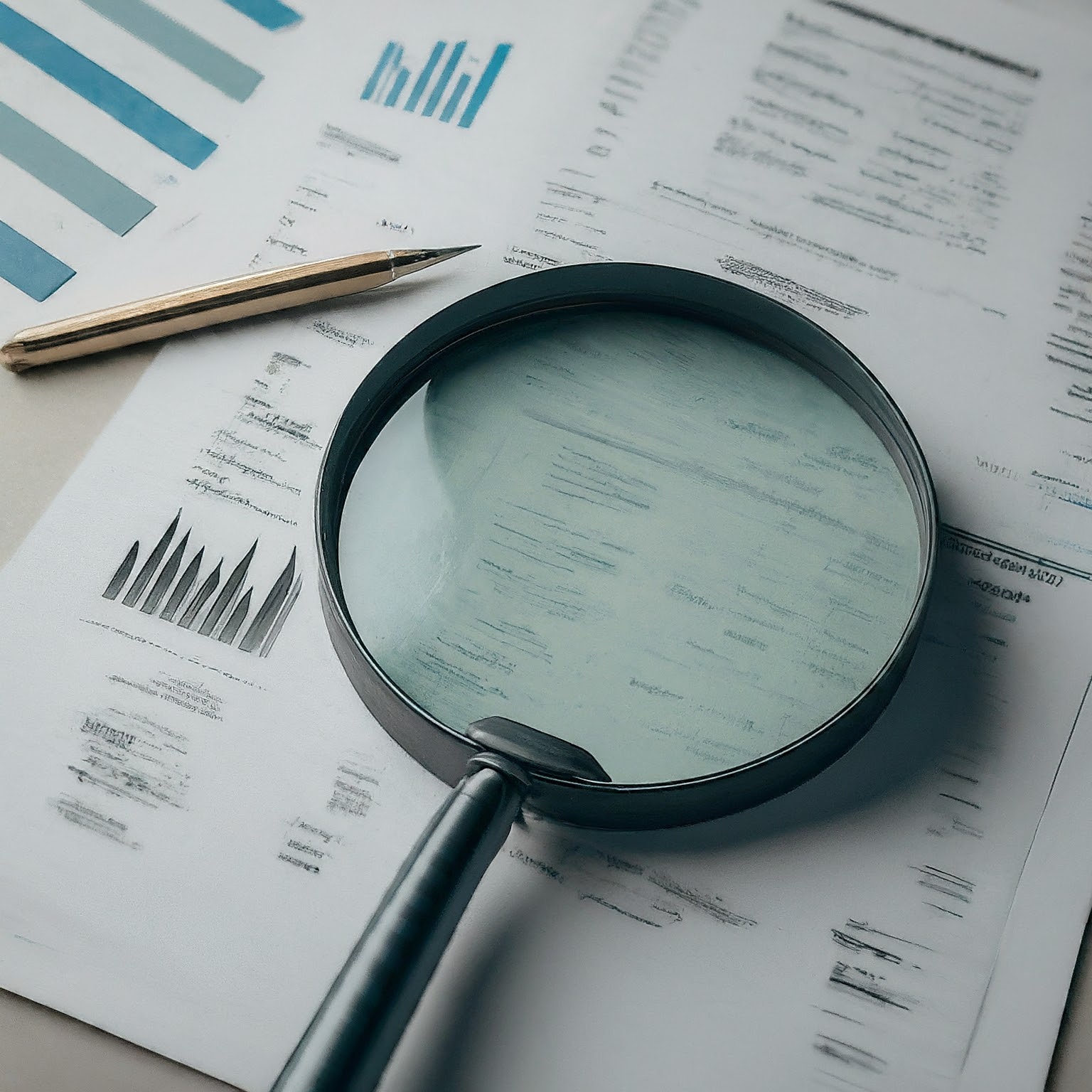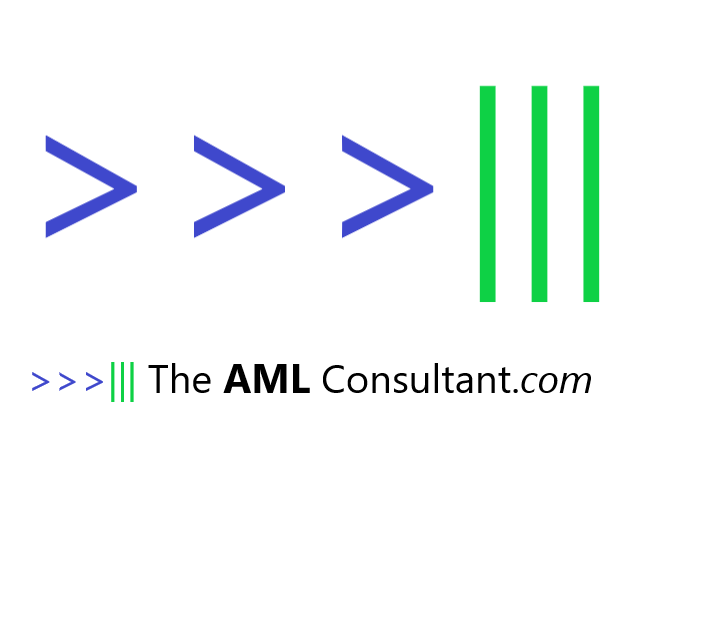
Knowledge resources!
-

Cryptocurrency’s rise has been accompanied by a shadow: its use in criminal activity. Scammers have found crypto’s anonymity and ease of transfer attractive for laundering money obtained through illegal means. This article explores how these schemes work and what red flags to watch out for.
Why Crypto Makes Money Laundering Easier
Traditional money laundering involves moving illicit funds through a complex web of accounts and transactions to disguise their origin. Crypto offers several advantages for criminals:
- Pseudonymity: Unlike bank accounts with real names, crypto transactions often use wallet addresses that don’t directly identify the owner.
- Speed and Borderlessness: Crypto transactions can happen almost instantly and transcend geographic borders, making them harder to track.
- Fractional Transactions: Crypto can be easily divided into smaller amounts, facilitating movement of stolen funds in smaller increments.
Crypto Scams and Laundering: A Vicious Cycle
Scammers often target unsuspecting victims with promises of high-return crypto investments or pump-and-dump schemes. Once victims transfer funds to scammer-controlled wallets, the laundering process begins:
- Chain Hopping: Funds are cycled through multiple anonymous wallets and different cryptocurrencies, making them harder to trace.
- Mixing Services: These services pool funds from various sources before distributing them, further obfuscating the trail.
- Cashing Out: Laundered crypto is eventually converted into cash through unregulated exchanges or peer-to-peer transactions.
Protecting Yourself from Crypto Scams
If you’re considering cryptocurrency, be cautious and aware of the red flags:
- Guaranteed High Returns: If something sounds too good to be true, it probably is. Legitimate crypto investments involve risk.
- Pressure to Invest Quickly: Scammers want you to rush into a decision before you do your research.
- Unlicensed Platforms: Only invest on platforms registered with financial regulators.
Crypto Regulation and the Fight Against Laundering
Law enforcement agencies are working with regulatory bodies to develop strategies to combat crypto-related money laundering. This includes stricter identification requirements for cryptocurrency exchanges and enhanced transaction monitoring.
Cryptocurrency has the potential to revolutionize finance, but it’s crucial to be aware of its vulnerabilities. By understanding how scammers use crypto and taking precautions, you can protect yourself from becoming a victim.
-

An upcoming audit can feel like a storm cloud looming over the horizon. But fear not, prepared professionals! With a little planning and a positive approach, you can transform an audit from a source of stress into an opportunity for growth. Here are some helpful tips to navigate this process with confidence:
Empower Yourself with Knowledge
You are the expert on your department’s procedures. Take time to review internal controls and familiarize yourself with the audit team’s typical areas of focus. Knowledge is power – it allows you to anticipate questions and provide clear, concise responses.
Embrace Collaboration
The audit team isn’t there to find fault, they’re there to ensure financial accuracy. Approach them as collaborative partners. Open communication fosters trust and a more efficient review process.
Maintain Professional Demeanor
While a friendly atmosphere is ideal, avoid getting overly familiar. Focus on clear communication and a professional demeanor. This builds a foundation of respect and ensures a productive audit.
Prioritize Organization
Have all necessary documents readily available. A well-organized workspace not only saves time during the audit but also demonstrates your competence and commitment to financial transparency.
Address Concerns Proactively
If you anticipate any areas of potential inquiry, prepare clear explanations beforehand. This proactive approach demonstrates your commitment to addressing any issues and fosters a smoother audit process.
Seek Clarification When Needed
Don’t hesitate to ask for clarification if an auditor’s request seems unclear. Taking the extra time to fully understand their needs ensures you provide the most accurate and relevant information.
Focus on Solutions
If any issues arise, focus on solutions. Work collaboratively with the audit team to develop effective strategies for improvement. Showcasing a proactive approach demonstrates your commitment to maintaining strong financial controls.
Maintain a Positive Outlook
Audits are a standard part of financial best practices. View them as an opportunity to strengthen internal controls and demonstrate your department’s commitment to financial accuracy.
Celebrate Success
Once the audit is complete, take a moment to acknowledge the hard work and dedication of your team. A successful audit is a testament to your department’s strong financial practices.
By following these tips, you can transform the audit process from a source of stress into a positive experience that fosters both personal growth and departmental success.
-
The European Regulatory Landscape in the Cryptocurrency Space: MiCA Takes Center Stage
Categories: UncategorizedThe European Regulatory Landscape in the Cryptocurrency Space: MiCA Takes Center Stage
The European Union (EU) has emerged as a leader in establishing a comprehensive regulatory framework for cryptocurrency, aiming to strike a balance between fostering innovation and protecting consumers and financial stability. This framework, known as the Markets in Crypto-Assets Regulation (MiCA), came into effect in July 2023.
Here’s a breakdown of the key aspects of MiCA:
Scope:
- MiCA applies to a broad range of crypto-assets, including tokens used for payments, investment, and utility purposes. However, it excludes certain digital assets already regulated under existing financial regulations, such as e-money and securities.
Key Regulatory Elements:
- Authorization and Supervision: MiCA introduces a licensing regime for crypto-asset service providers (CASPs) offering various services like custody, exchange, and trading. These CASPs need to be authorized by national competent authorities and subject to ongoing supervision.
- Consumer Protection: MiCA emphasizes investor protection by requiring CASPs to implement strict know-your-customer (KYC) and anti-money laundering (AML) procedures.
- Transparency and Market Integrity: MiCA mandates transparency requirements for crypto-asset issuers, requiring them to provide clear and accurate information about the assets they offer. Additionally, it sets out measures to combat market manipulation and insider trading.
Impact and Significance:
- Harmonization: MiCA acts as a unified regulatory framework applicable across all EU member states, eliminating the patchwork of national regulations that previously existed. This harmonization is seen as a positive step for businesses and investors seeking clarity and consistency across the EU market.
- Innovation and Competition: While establishing a framework, MiCA aims to avoid stifling innovation in the crypto space. It includes provisions to facilitate the development of new technologies and business models while ensuring responsible conduct.
- Global Influence: As a comprehensive regulatory framework, MiCA is being observed by other jurisdictions considering their own approaches to crypto regulation. Its impact could extend beyond the EU, potentially shaping global standards in this evolving space.
Current Landscape and Future Developments:
- MiCA is still in its early stages of implementation, and some aspects require further clarification through regulatory technical standards (RTS) currently being developed by the European Commission.
- The effectiveness of MiCA will depend on its successful implementation and enforcement by national authorities. Additionally, the regulatory landscape may evolve as new technologies and use cases emerge in the crypto space.
-
Decoding the Blockchain: Software for Cryptocurrency Transaction Analysis and Monitoring
Categories: Uncategorized
The cryptocurrency landscape thrives on transparency, with all transactions publicly viewable on the blockchain. Yet, deciphering this vast amount of data for analysis and monitoring is no easy feat. That’s where specialized software comes in, offering valuable insights for various actors:
For Businesses and Exchanges:
Compliance: Solutions like Chainalysis KYT and CipherTrace help comply with Anti-Money Laundering (AML) regulations by screening transactions against blacklists and identifying suspicious activity. They also integrate with the Travel Rule, facilitating information sharing about senders and receivers.
Risk Management: Platforms like Elliptic and Crystal Blockchain use advanced analytics to assess the risk associated with individual wallets and transactions, enabling informed decisions about user onboarding and transaction approval.
Market Analysis: Tools like Santiment and IntoTheBlock analyze social media sentiment and on-chain metrics to provide insights into investor behavior and market trends, aiding in informed trading and investment decisions.
For Individual Investors and Traders:Wallet Tracking: Services like Blockchain.com and Etherscan allow users to track their own transactions and explore the blockchain, while platforms like Whale Alert highlight large-volume transactions that might signal market movements.
On-Chain Analysis: Advanced tools like Glassnode and Messari delve deeper, offering charts, metrics, and insights into network activity, coin supply, and technical indicators for comprehensive market analysis.
Sentiment Analysis: Services like The TIE and LunarCrush aggregate social media data to gauge investor sentiment and identify potential hot topics or emerging trends.
Choosing the Right Tool:The “best” software depends on your specific needs. Consider factors like:
Purpose: Are you aiming for compliance, risk management, market analysis, or personal tracking?
Coin Coverage: Does the software support the cryptocurrencies you’re interested in?
Features: What specific functionalities do you need (e.g., wallet scoring, network analysis, regulatory compliance)?
Cost: Free options exist, but advanced features often come with subscription fees.
Beyond the Tools:Remember, software is just one piece of the puzzle. Understanding blockchain technology and staying informed about evolving regulations are crucial for effective analysis and informed decision-making in the ever-changing world of cryptocurrency.
Disclaimer: This article is for informational purposes only and should not be considered financial advice. Always do your own research before making any investment decisions.
-
Shining a Light on the Cryptoverse: How Blockchain Compliance Software Works
Categories: Uncategorized
Shining a Light on the Cryptoverse: How Blockchain Compliance Software Works
As cryptocurrencies gain mainstream adoption, the need for transparency and regulatory compliance intensifies. Enter blockchain compliance software like Chainalysis, acting as detectives to sift through the vast, public ledger of transactions and identify potential risks. But how exactly do these tools work?
Demystifying the Blockchain:
Imagine a giant spreadsheet recording every cryptocurrency transaction ever made, accessible to anyone. That’s the blockchain, offering unparalleled transparency. However, navigating and analyzing this data manually is like searching for a needle in a haystack.
Enter the Software:
- Data Collection: Software like Chainalysis ingests vast amounts of blockchain data from various sources, including exchanges, wallets, and darknet marketplaces.
- Transaction Tracking: Every transaction on the blockchain has a unique address. The software tracks the movement of funds across these addresses, building a picture of how cryptocurrencies flow.
- Entity Recognition: Advanced algorithms identify and link addresses to real-world entities like individuals, exchanges, or darknet actors. This helps understand who’s behind the transactions.
- Risk Scoring: Based on historical data, transaction patterns, and regulatory watchlists, the software assigns risk scores to addresses and entities. High-risk scores could indicate money laundering, terrorism financing, or other illicit activities.
- Alerts and Reporting: The software continuously monitors transactions and generates real-time alerts when suspicious activity is detected. It also provides detailed reports for compliance teams to investigate further.
Benefits for Different Players:
- Financial Institutions: Comply with AML/KYC regulations by screening transactions against watchlists and identifying high-risk customers.
- Law Enforcement: Investigate criminal activity by tracing stolen funds or identifying actors involved in illegal transactions.
- Exchanges: Enhance security by identifying suspicious users and preventing fraud.
- Investors: Make informed investment decisions by analyzing network activity and identifying potential risks or opportunities.
Limitations and Considerations:
- Privacy Concerns: While focusing on illicit activity, the software still deals with personal data, raising privacy concerns.
- False Positives: The complex algorithms can generate false positives, requiring human expertise for accurate analysis.
- Evolving Tech: As new cryptocurrencies and protocols emerge, compliance software needs to adapt to stay effective.
Conclusion:
Blockchain compliance software like Chainalysis plays a crucial role in ensuring the transparency and legitimacy of the crypto ecosystem. By analyzing and interpreting blockchain data, it helps identify and mitigate risks, fostering a safer and more regulated crypto landscape. However, it’s important to understand the limitations and implications of such tools while advocating for responsible development and ethical use.
-
Conquering Complexity: A Modular Approach to Building Your AML/CTF Program
Categories: Uncategorized
Conquering Complexity: A Modular Approach to Building Your AML/CTF Program
Navigating the intricate world of Anti-Money Laundering (AML) and Counter-Terrorism Financing (CTF) compliance can feel like traversing a labyrinth. Organizations often grapple with a multitude of documents, each vying for attention and leaving behind a trail of confusion. But what if there was a way to streamline this process, creating a framework that is both modular and multi-tiered, offering clarity and efficiency?
Enter the modular and multi-tiered approach to building your AML/CTF program. This method envisions your program as a series of interconnected documents, each serving a specific purpose and contributing to a comprehensive whole. Let’s delve into the building blocks of this robust structure:
1. The Foundation: AML/CTF Legal Requirements Document
This bedrock document outlines the legal and regulatory obligations your organization must adhere to. It serves as the unwavering compass, guiding all subsequent tiers towards compliance. Think of it as the blueprint, ensuring your program aligns with the intricate landscape of AML/CTF regulations.
2. The Guiding Light: The AML/CTF Policy
Imagine a beacon illuminating the path forward. The AML/CTF Policy, endorsed by the highest echelons of your organization, sets the overarching principles and direction for your program. It doesn’t delve into specifics but establishes a clear tone and commitment to combating financial crime.
3. The Roadmap: The AML/CTF Program
Now, we chart the course. The AML/CTF Program, approved by C-level executives, translates the policy into actionable procedures. It defines the key activities, resources, and controls your organization employs to mitigate AML/CTF risks. Picture it as the detailed itinerary, outlining the route you’ll take to reach your compliance destination.
4. The Handbook: The AML/CTF Manual
As you embark on your journey, the AML/CTF Manual serves as your trusted guide. This operational-level document delves into the nitty-gritty, detailing the how-to’s of each procedure. It explains, step-by-step, how your staff should navigate each AML/CTF requirement, ensuring consistent and accurate implementation. Think of it as the comprehensive manual, offering practical instructions for every turn in the AML/CTF road.
5. The Toolbox: The Procedure Manual
No journey is complete without the right tools. The Procedure Manual equips your staff with the instruments they need to conduct daily operations flawlessly. It encompasses not just AML/CTF but also credit risk, reporting, budgetary controls, and other relevant areas. Imagine it as your well-stocked toolbox, ensuring your staff is prepared for any operational challenge.
Global Considerations: The Group AML/CTF Policy
For organizations within a global network, an additional layer of guidance emerges. The Group AML/CTF Policy provides a high-level framework that transcends individual entities, ensuring consistency and cohesion across borders. It acts as a unifying flag, rallying all parts of the organization under the banner of robust AML/CTF compliance.
By adopting this modular and multi-tiered approach, you transform your AML/CTF program from a tangled mess into a well-organized symphony. Each document plays its distinct role, harmonizing to create a clear, efficient, and ultimately, compliant program. Remember, conquering the complexities of AML/CTF doesn’t require brute force; it demands strategic structure and modularity. So, embrace this approach, and watch your organization navigate the labyrinth of compliance with confidence and ease.
-

In today’s fast-paced financial landscape, identifying suspicious transactions is a constant battle. Traditional rule-based systems, while effective, often struggle with the sheer volume and complexity of modern transactions. Enter artificial intelligence (AI) and machine learning (ML): powerful tools that are revolutionizing transaction monitoring and improving the fight against financial crime.
Beyond the Rules: AI’s Superpowers
AI and ML offer several advantages over traditional rule-based systems:
- Pattern recognition: AI algorithms can analyze vast datasets of transactions, identifying subtle patterns and anomalies that might escape human eyes. This allows them to detect complex money laundering schemes, fraud, and other illicit activities that traditional rules might miss (Hwang et al., 2020).
- Adaptability: As criminal tactics evolve, AI models can continuously learn and adapt, staying ahead of the curve. This is crucial in a constantly changing financial environment (Sarkar & Mitra, 2019).
- Reduced false positives: AI can significantly reduce the number of false alerts generated by traditional systems, freeing up human analysts to focus on real threats (Dwivedi et al., 2021).
Algorithms in the Trenches: Weapons of Detection
A variety of AI and ML algorithms are used for transaction monitoring, each with its own strengths:
- Unsupervised learning: Algorithms like clustering and anomaly detection can identify transactions that deviate from normal patterns, even without pre-labeled data on suspicious activity (Shahzad et al., 2020).
- Supervised learning: Algorithms like support vector machines and neural networks can be trained on labeled data of suspicious and legitimate transactions, allowing them to accurately identify future instances of fraudulent or criminal activity (Chen et al., 2018).
- Graph-based algorithms: These algorithms can analyze the connections between entities involved in transactions, revealing complex networks that might be used for money laundering or other illicit purposes (Sen & Stojanovic, 2015).
The Human Touch: AI as a Partner, not a Replacement
While AI and ML are powerful tools, it’s important to remember that they are not a silver bullet. Human expertise and judgment remain essential in interpreting the results of AI models and making final decisions. AI should be seen as a partner that enhances human capabilities, not a replacement (Liao & Lai, 2020).
The Future of Financial Watchdogs:
The future of transaction monitoring is bright. As AI and ML technology continues to evolve, we can expect even more powerful and sophisticated algorithms that can effectively combat financial crime. However, ethical considerations and responsible development practices are crucial to ensure that these tools are used for good and not for malicious purposes.
Conclusion:
AI and ML are transforming transaction monitoring, making it faster, more accurate, and more effective. By harnessing the power of these technologies, we can create a safer and more secure financial system for everyone.
References:
- Chen, M., Mao, S., & Liu, Y. (2018). A machine learning approach to fraud detection in online banking. Applied Soft Computing, 63, 124–133.
- Dwivedi, A., Kapoor, K. K., & Rana, P. (2021). Artificial intelligence-powered smart transaction monitoring system for fraud detection in financial institutions. International Journal of Information Management, 59, 102292.
- Hwang, Y., Kang, J., & Moon, J. (2020). Deep learning for anomaly detection in financial transactions. Expert Systems with Applications, 148, 113446.
- Liao, Y. C., & Lai, C. H. (2020). A hybrid intelligent system for credit card fraud detection. Expert Systems with Applications, 149, 113511.
- Sarkar, P., & Mitra, S. (2019). Fraud detection in financial transactions using machine learning techniques: A review. Journal of King Saud University-Computer and Information Sciences, 31(4), 1349–1361.
- Sen, P., & Stojanovic, L. (2015). Graph-based anomaly detection in financial transaction networks. In 2015 International Conference on Data Mining (ICDM) (pp. 211–220). IEEE.
- Shahzad, A., Hussain, A., & Ullah, A. (2020). Transaction anomaly detection using one-class support vector machine. International Journal of Machine Learning and Cybernetics, 11(1), 213–228.
-
Unveiling the Shadows: The Three Stages of Money Laundering and the Three Lines of Defense
Categories: Uncategorized
Money laundering, the process of disguising the origin of illegally obtained funds, poses a significant threat to financial systems and global security. Understanding its methods and effective countermeasures is crucial in combating this illicit activity. This article delves into the three distinct stages of money laundering and explores the three lines of defense employed to thwart its progress.
The Three Stages of Money Laundering:
Placement: This initial stage involves physically introducing the dirty money into the financial system. This often occurs through cash-intensive businesses, shell companies, or structured deposits, where smaller amounts are deposited across multiple accounts to avoid detection.
Layering: Here, the funds are obfuscated through complex financial transactions to create distance between the illicit source and the laundered money. This might involve multiple transfers across different jurisdictions, layers of shell companies, or trades in high-value assets like jewelry or art.
Integration: Once sufficiently layered, the funds are reintroduced into the legitimate financial system, appearing clean and accessible for further use. This could involve investments, real estate purchases, or even donations to seemingly legitimate charities.
The Three Lines of Defense:
First Line of Defense: This frontline comprises those directly involved in transactions, like bank tellers, accountants, and casino staff. They are responsible for identifying suspicious activity through Know Your Customer (KYC) procedures, transaction monitoring, and reporting anomalies.
Second Line of Defense: This line oversees and supports the first. Compliance officers, risk management teams, and IT specialists develop policies, conduct due diligence, and implement monitoring systems to detect and prevent suspicious activity.
Third Line of Defense: This independent line provides assurance and oversight. Internal audit teams and regulators independently assess the effectiveness of the first two lines, identifying weaknesses and recommending improvements.
Working Together:
The three lines of defense work collaboratively to form a robust anti-money laundering (AML) framework. Effective training, clear communication, and advanced technology empower each line to fulfill its role.
Beyond Awareness:
Understanding the money laundering stages and the defensive lines is crucial, but vigilance is equally important. Reporting suspicious activity, regardless of its perceived significance, can disrupt laundering attempts and bring criminals to justice.
By staying informed and engaged, we can all contribute to building a stronger defense against the shadows of money laundering.
Disclaimer: This article is for informational purposes only and does not constitute professional financial or legal advice. Please consult with qualified professionals for any specific questions or concerns.
